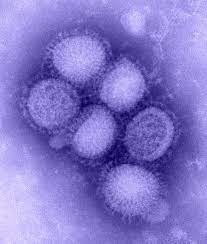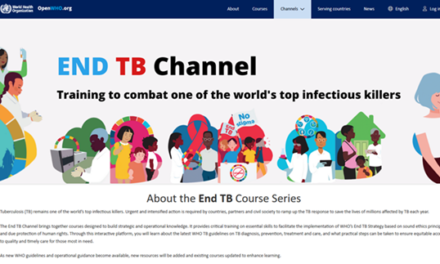Avian Influenza A(H5N1) – Viet Nam
Situation at a Glance
Description of the Situation
On 25 March 2024, Viet Nam National Focal Point (NFP) for International Health Regulations (IHR) notified the World Health Organization (WHO) of one case of human infection with an influenza A(H5N1) virus in a 21-year-old male with no underlying conditions from Khanh Hoa Province, Viet Nam.
The case developed a fever and cough on 11 March 2024 and was admitted on 15 March to a local hospital due to persistent symptoms, including abdominal pain and diarrhoea. On 17 March, his condition worsened, and he was transferred to the Intensive Care Unit (ICU) of a provincial hospital. On 20 March, the patient was transferred to another provincial hospital with a diagnosis of severe pneumonia, severe sepsis, and acute respiratory distress syndrome. The case died on 23 March.
On 19 March, samples were taken for real-time polymerase chain reaction (RT-PCR) testing by the Pasteur Institut in Nha Trang, which resulted in a positive result for the influenza (H5) virus. On 22 March, genomic sequencing conducted by the Pasteur Institut of Nha Trang revealed the presence of the avian influenza A (H5N1) virus.
Initial results from the case investigation revealed that during the second and third weeks of February 2024, the case went bird hunting. Between that time and the onset of illness, no contact with dead or sick poultry nor contact with anyone exhibiting similar symptoms was reported. Among close contacts traced, no further cases of influenza A(H5N1) were detected.
Epidemiology
Animal influenza viruses normally circulate in animals but can also infect humans. Infections in humans have primarily been acquired through direct contact with infected animals or contaminated environments. Depending on the original host, influenza A viruses can be classified as avian influenza, swine influenza, or other types of animal influenza viruses.
Avian influenza virus infections in humans may cause diseases ranging from mild upper respiratory tract infection to more severe diseases and can be fatal. Conjunctivitis, gastrointestinal symptoms, encephalitis and encephalopathy have also been reported. There have also been several detections of A(H5N1) virus in asymptomatic persons who had exposure to infected birds in the days before a sample was collected.
Laboratory tests are required to diagnose human infection with influenza. WHO periodically updates technical guidance protocols for the detection of zoonotic influenza using molecular methods, e.g. RT-PCR. Evidence suggests that some antiviral drugs, notably neuraminidase inhibitors (oseltamivir, zanamivir), can reduce the duration of viral replication and improve prospects of survival in some cases.
From 2003 to 25 March 2024, a total of 888 worldwide human cases of infection of influenza A(H5N1), including 463 deaths, have been reported to WHO from 23 countries. Almost all cases of human infection with avian influenza A(H5N1) have been linked to close contact with infected live or dead birds, or contaminated environments.
Since 2003, 129 human infections with influenza A (H5N1), including 65 deaths, have been reported in Viet Nam. The most recent avian influenza A (H5) case was reported in October 2022 from Northern Province of Phu Tho, Viet Nam.
Public Health Response
The Government of Viet Nam has taken the following public health response actions:
- Conducting epidemiolocal investigation, and disinfection of the patient’s residence and suspected exposure areas.
- Contact tracing, isolation, testing and monitoring for close contacts of the patient.
- Testing of samples from chickens and ornamental birds near the patient’s residence. All samples collected from these birds have tested negative for influenza A(H5) viruses.
- Issuing an official letter requesting the Provincial Department of Health of Khanh Hoa province to prepare drugs (Oseltamivir), and other supplies, to timely support the local hospitals and authorities in patient management and containment of potential outbreaks.
WHO Risk Assessment
This is the first human infection with an avian influenza A (H5N1) virus reported in Viet Nam in 2024, and since 2022.
Most human cases of infection with avian influenza viruses reported to date have been due to exposure to infected poultry or contaminated environments.
Human infection can cause severe disease and has a high mortality rate. These A(H5N1) influenza viruses, belonging to different genetic groups, do not easily infect humans, and human-to-human transmission thus far appears unusual. As the virus continues to circulate in poultry, particularly in rural areas of Viet Nam, the potential for further sporadic human cases remains.
Currently, available epidemiological and virological evidence suggests that A(H5) viruses have not acquired the ability of sustained transmission among humans; thus, the likelihood of human-to-human spread is low.
Based on available information, WHO assesses the risk to the general population posed by this virus as low. The risk assessment will be reviewed if additional virological and epidemiological information becomes available.
WHO Advice
This event does not change the current WHO recommendations on public health measures and influenza surveillance.
The public should avoid contact with high-risk environments such as live animal markets/farms and live poultry, or surfaces that might be contaminated by poultry dropping. Additionally, it is recommended to maintain good hand hygiene with frequent washing or the use of alcohol- based hand sanitizer.
The general public and at-risk individuals should immediately report instances of sick or unexpected animal deaths to veterinary authorities. Consumption of sick or unexpectedly dead poultry should be avoided.
Any person who has had exposure to potentially infected birds or contaminated environments and feels unwell should seek health care promptly and inform their healthcare provider of their possible exposure.
Close analysis of the epidemiological situation, further characterization of the most recent influenza A(H5N1) viruses in both human and poultry populations, and serological investigations are critical to assessing associated risks to public health and promptly adjusting risk management measures.
There are no specific vaccines for influenza A(H5N1) in humans. However, candidate vaccines have been developed for pandemic preparedness in some countries. The WHO continues to update the list of zoonotic influenza candidate vaccine viruses (CVV), which are selected twice a year at the WHO consultation on influenza virus vaccine composition.
WHO advises against implementing travel or trade restrictions based on the current information available on this event. WHO does not advise special traveler screening at points of entry or other restrictions due to the current situation of influenza viruses at the human-animal interface.
State Parties to the International Health Regulations (2005) are required to immediately notify WHO of any laboratory-confirmed case of a recent human infection caused by a new subtype of influenza virus. Evidence of illness is not required for this notification.
Further Information
- WHO Global influenza programme, human-animal interface
- WHO Monthly Risk Assessment Summary: Influenza at the human-animal interface
- WPRO Avian Influenza Weekly
- Protocol to investigate non-seasonal influenza and other emerging acute respiratory diseases:
- Summary of Key Information Practical to Countries Experiencing Outbreaks of A(H5N1) and Other Subtypes of Avian
- Maintaining surveillance of influenza and monitoring SARS-CoV-2 – adapting Global Influenza surveillance and Response System (GISRS) and sentinel systems during the COVID-19 pandemic
- Case definitions for the four diseases requiring notification in all circumstances under the International Health Regulations (2005)
- Evidence-based risk management along the livestock production and market chain: Cambodia
- Food and Agriculture Organization of the United Nations (FAO) – Animal Production and Health division (NSAH). FAO-NSAH Animal Health Threats Update. 11 October 2023.
Citable reference: World Health Organization (2 April 2024). Disease Outbreak News; Avian Influenza A(H5N1) – Viet Nam. Available at https://www.who.int/emergencies/disease-outbreak-news/item/2024-DON511











